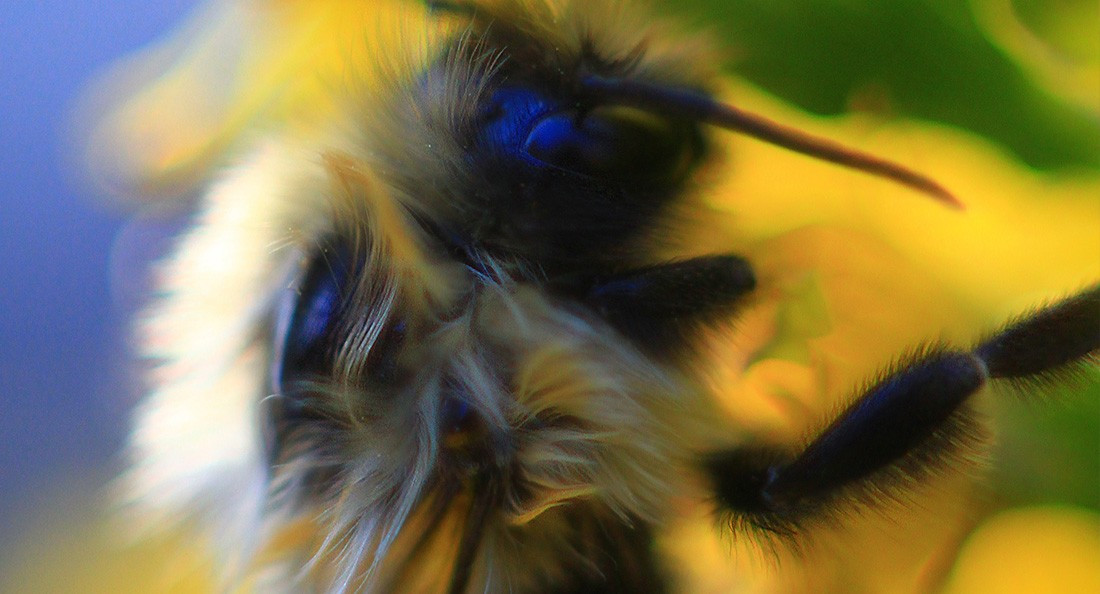Trees and bees
Winnipeg’s urban beekeeping and sap harvesting scene
When it comes to Winnipeg’s urban environment, there are untapped resources peppered all throughout our city.
Whether you approach these opportunities as a hobbyist, want to dip your toes in a new trade or just want a sweet reward for your warm weather work, tapping trees for syrup and raising bees for honey are two ways you can do this.
However, new hobbyists who interact with the environment may face restrictions that just might require a bit of rule-breaking.
Bees
After working with bees on an organic farm and pairing her experience with a beekeeping course she took at the University of Manitoba in 2009, Melissa Dupuis has been keeping bees in Winnipeg since 2011.
“Originally, I lived in an apartment and didn’t drive much, so my interests were keeping bees in the city,” Dupuis says. “But there was a bylaw against it, and there still is a bylaw against residential beekeeping for the moment, so I ended up keeping bees at a farm just outside of the city.”
But she later found other ways to bring the practice within city limits.
“I did end up keeping bees in someone's backyard in the city, which I’ve been doing for a few years, but that was under the radar,” she says.
Eventually, she created and co-ordinated one of Winnipeg’s first downtown rooftop hives at the University of Winnipeg (U of W) in 2013.
“(When) I worked at the U of W, I had read the beekeeping bylaws, and the university was exempt. So that’s how I started the (UWinnipeg Beekeepers). I did that for a few years,” Dupuis says.
Although beekeeping is shaping up to be more common practice in Winnipeg, city bylaws are just starting to catch up.
As of February 2016, Winnipeg’s laws have changed to accommodate the growing number of interested and aspiring urban apiarists and apiaries (beekeepers and beekeeping operations) in Winnipeg’s downtown, which is now a green area, meaning beekeeping is permitted with registration.
The push for a residential beekeeping bylaw to pass is still underway, but the same cannot be said for tapping trees on public property. According to Richard Westwood, professor in the department of biology and environmental studies at the U of W, that’s not about to change any time soon.
Trees
“The bylaw with the city protects all trees in Winnipeg on public property, cutting them, removing them or defacing them in any way,” he says. “For hobbyists, it’s all about finding the trees, mainly because you can’t do anything to public trees, and I don’t see the city relaxing on that.”
The story is different for those who have access to trees away from the public eye.
“There are no existing bylaws for private trees in the city,” he says. “On private property, I think (tree tapping) is a good thing.”
Lexi Van Dyck started tapping trees in the spring of 2016 after taking a workshop with Ken Fosty from Sage Garden.
“I was looking to have this source of food and something local I could get my hands into but also find something to add to this part of the year when I’m really itching for spring,” Van Dyck says. “There’s nothing green around, (but) this is something I can do with plants.”
Both Van Dyck and Westwood say the best trees to collect sap to make syrup from – Manitoba maple or birch trees – are found in public spaces.
As an alternative to tapping public trees, Westwood proposes planting your own trees and tapping them in 10 to 15 years, taking a multi-generational approach to the practice that stays within the city’s bylaws.
But Van Dyck, equipped with the proper knowledge and tools, has taken advantage of the public trees readily available to her.
“Within city limits, you’re not really supposed to tap trees on public property. Some people do. You can go around and see taps in city parks. Mine are in a park as well, and some (are) in backyards.”
Risky business
Both Westwood and Van Dyck emphasize the importance of knowing how to properly tap a tree, taking into consideration tree diameter size, how often to harvest and having proper and clean equipment.
Van Dyck is also an aspiring apiarist and expresses concerns about unpracticed beekeepers.
“I have mixed feeling(s) about allowing residential beekeeping. It sort of gives the green light to people so that there will be more people keeping bees, which creates challenges,” Van Dyck says. “Get involved but (don’t) jump into it before you know what you’re doing, because if I tried to do that, I think I would have killed a lot
of bees.”
Dupuis echoes these concerns and urges new beekeepers not to jump in before they are ready.
“When you’re starting out beekeeping, there’s so much to learn, and the pest and disease management side maybe falls away,” she says.
Good practices reap sweet rewards
Though some may condemn the clandestine side to these practices, Westwood, Dupuis and Van Dyck all agree that education is key in moving forward.
“If everyone is registering their hives, they can be inspected more. People can reach out more to help, so new beekeepers will have a larger access to networks, and you can also pay attention to how many hives there are in an area and keep a balance of how many people there are,” Dupuis says.
“I would love to see more people getting involved (with tree tapping). There’s a lot of maple and birch in the city, and there’s this huge untapped resource. I think it’s important to be looking at how we can be involved with producing our own food,” she says.
Published in Volume 71, Number 26 of The Uniter (March 30, 2017)







